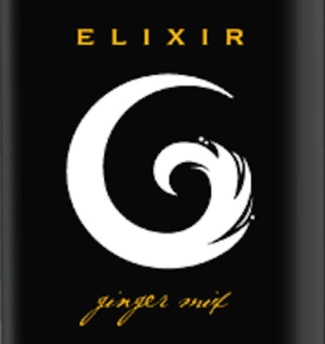|
Alan Moore runs nearly 50 restaurants. Just a few years ago, this would mean millions of dollars invested in real estate, labor and other capital expenses, not to mention a complex operational strategy to keep things running smoothly. But in today’s day and age, this restaurant tycoon can oversee this myriad of brands with little more than a commercial kitchen, a strong marketing eye, and of course, a slew of delivery services that brings them to life.
“We created 4 brands 18 months ago and launched them. Burgers, tacos, pizza and the like. We came up with some cool names and launched them on Postmates and Doordash. That snowballed,” begins Moore, who not only runs these virtual restaurants but also commands a brick-and-mortar establishment, Cheebo in Hollywood. It was experimenting with the delivery platforms through Cheebo that led Moore to start these virtual brands and ultimately lead a consulting business for the space, Virtual Restaurant Consulting, with his brother, Paul. “It’s a seismic shift and it’s consumer-led,” Moore said. The passion in his voice resonates through a thick English accent. “The delivery companies are taking over the whole world.” He’s speaking to the rise of ‘virtual restaurants’ or restaurants that don’t actually sport dining rooms or even pick-up counters. Their physical presence is limited to a commercial kitchen space, and do 100% of their business through delivery platforms, such as Grubhub, Uber Eats, Postmates and DoorDash. Moore sees virtual restaurants playing a pivotal role in the foodservice industry, and the delivery platforms completely changing the way that traditional brick-and-mortar restaurants structure their menus and operations. “Running a virtual restaurant is no different than running a traditional restaurant, where you go to work everyday and nurture your business,” Moore said. “It’s not just creating a name and throwing it up on Postmates. You need to create the recipes, cost the menu, handle the photography, build it out of social media, and truly bring the virtual restaurant to life. You have to monitor sales, pull up product mix reports, look at your pricing. It’s not just fire and forget.” But while complex, significantly lower up-front costs open the door to many aspiring restaurateurs looking to break into the field. And Moore has perfected the process of opening a virtual restaurant, to the point of creating a step-by-step guide for new and prospective owners. “In 6 weeks, someone will come out with hands-on knowledge of exactly what needs to be done and will have 1 – 2 virtual restaurants ready for launch,” Moore said. He also noted that it was easier to manage multiple virtual restaurant brands rather than just one, claiming that a kitchen is better utilized when several concepts are online. Virtual restaurants typically take an In-n-Out style approach, with hyper-focused menus that of revolve around a shortlist of core products. So instead of creating a single restaurant that serves burgers, fried chicken, sandwiches and mac ‘n’ cheese, you’d create four restaurants that specialize in each of those categories. Of utmost importance, however, are several factors. Being transparent about the restaurant being a virtual restaurant, viewing delivery drivers as servers, and engineering your food for delivery are at the top of the list. “You have to serve food that doesn’t just taste good out of the dining room, but also looks and tastes good after riding in the back of a Ford Fusion for 40 minutes,” Moore said. “Crispy fries will phase out. Crinkle-cut will become more popular because they stay good longer. We’re producing more spinach dishes than broccoli, because broccoli doesn’t last as long.” This kind of engineering includes balancing beautiful photography and managing expectations. “All the photography on the delivery platforms is on a plate, but course your food isn’t delivered on a plate…customers often feel like they’re getting less food than what they see in the picture, even though it’s the exact same amount. We’ve been playing around with how to package food so that customers are satisfied with portion sizes.” Moore says the name of the game is high-margin items that deliver well. This formula helps mitigate the logistical challenges and costs of delivery. “The old model of food costs of 30 – 35%, labor of 35 – 40%, etc. has gone out the window. A traditional restaurant is going to struggle working with the delivery apps,” Moore said. “Food cost and packaging together needs to be 22%.” And it’s not just the cost structure that will change, in More’s view. He sees a future where in addition to virtual restaurants, brick-and-mortar restaurants will have entirely separate menus solely dedicated to delivery. “Restaurant food wasn’t necessarily designed for delivery,” Moore said. “The restaurant will offer a menu for delivery that…will be designed differently and conceived differently.” Find out more about Virtual Restaurant Consulting at VirtualRestaurantConsulting.com.
1 Comment
 Elixir G founder Bill Tocantins has traveled the world in search of ingredients to craft the perfect ‘liquid ginger.’ Since stumbling onto the idea for fresh ginger syrup nearly 10 years ago, Tocantins has become a thriving entrepreneur, expanding Elixir G’s outreach to save restaurants millions in ingredient costs and give consumers the opportunity to make their very own ginger beer at home. Tocantins took the time to discuss Elixir G’s development, as well as the peaks and valleys that come with launching a new product in the F&B world. How did you come up with the idea for Elixir G? “Some people I knew had an Indian restaurant and moved to a location with a liquor license. When I took over the bar program, they had this ginger [syrup] and I decided to make a margarita out of it. It was a big success. I had people getting up out of their seats to ask me ‘how did you make this?’” “I knew that people were flocking to this stuff. I asked [the restaurant owners] if they wanted to bottle it, and they said no. They responded that ‘we’re in the restaurant business, and that’s not what we do.’ I saw the opportunity and decided to pursue it.” What went into the product development process? “There was an enormous amount of trial and error. I explored gingers from across the world. After some time I found that far and away the best ginger source is Hawaii…It’s amazing, I looked at nine competitors and only three of them are using fresh ginger.” “Originally, Elixir G was called Gingerita. I took on a partner who had a marketing background. We went to three designers and gave them the description of what we were doing. After 15 – 20 different ideas, one designer eventually came up with Elixir G and that’s what stuck.” “We started our first version of Elixir G in 2007. My partner was on board until 2011. Since then I’ve been CEO as well as a Chief Bottle Washing Officer [laughs].” Who drinks Elixir G? “Women, age 21 – 39. Women are the change-makers. Men will find what they want to drink and stick with it for 20 years. Women are always looking to try something new and see what’s out there. Women have always responded positively to our product...based on the length of time they spend with us, either on the phone when they’re ordering or at one of our booths during a fundraiser or expo." How are you building Elixir G's customer base, and what have been some of your biggest challenges so far? "Our first target is to go to the restaurants rather the retail stores. It’s one step easier. When we educate the restaurant, they can use it right away. The stores are tougher. First you have to convince the store to buy, then you have to convince the public how to use it.” "Our biggest success recently has been Longhorn Steakhouse. We started in Yard House, where they used it for their Moscow Mule and saw so much success that they expanded to three cocktails. Then [Yard House] got bought by Darden Restaurants. Once we were in Darden’s system, we jumped to Longhorn’s 450 restaurants. They started cooking with it, making a ginger-flavored steak. They’ve had so much success with it in their drink program that they’re also offering three variations of Moscow Mules." "We started to look into Amazon to retail directly to consumers. With a new product it’s very expensive to get off the ground. With some retailers, they will require a free case for every store to offset the risk for their selling the product. We’re looking to target those regional stores who will make room for the smaller labels like ours." "The hardest piece of the puzzle is the distributor. Distributors usually won’t take a new product until it has a demand of more than 200 cases a month. That said, since we're a nonalcoholic product we’re lucky that we have two choices: liquor and food distributors." What are the next steps for Elixir G? "We're pursuing restaurant chains right now as hard as we can. For a restaurant chain that has 1,000 locations, we can save them $1.2 million a year. Eventually…we’ll target various areas for retail and come out with a plan to saturate the media and inform the public. We're also open to a liquor brand partnership several years. Big food companies across the country have been hit hard by what can only be described as a serious loss of trust by their consumer base. Coca Cola, Kraft, Nestle and Mondelez [parent company of Nabisco] are just a few food giants that have seen their CEOs resign. Granted, these companies are alive and well and likely to perform just fine moving forward, but their age-old model of mass-scale, low-cost production is not resonating like it did decades ago, back in the day when all you needed at a baseball stadium were hot dogs and nachos. So what does this mean for restaurants? Big things, all revolving around modernization. All consumer trends right now point to the little guy, the mom-and-pop-ish, locally sourced, small-scale production center where business is made up of guests who know and trust the product. To many, ‘big food’ is synonymous with chemicals, additives, fillers and other elements that consumers are sick of putting into their bodies. A growing clientele is ready and willing to pay a premium for ingredients they trust. This means going to restaurants that embody these same qualities. Each of these big food companies has extended great effort in building their product portfolios to include more ‘trusted’ brands. Kellogg, for example, recently purchased RX Bar, the ‘No BS’ protein bar maker, for a whopping $600 million. Why? In all likelihood, to help modernize the Kellogg brand with a product that has clearly resonated with a newer-age clientele. For restaurants, this means you may want to take a look at your menu mix and assess whether your approach truly appeals to your guests today. Does this mean that as a restaurant you should drop everything, revamp your menu and change out your suppliers all at once? Of course not. Coca Cola will never relinquish its soda business because that’s the core of the brand—they’ve simply built onto that brand by acquiring names such as Odwalla and Zico. As a restaurant owner, this means taking a step back, assessing what’s truly at the core of your business, and finding simple ways to modernize so that you can retain your identity while coming across as new and revamped. This may not always be a food-related change. I recently visited what many would call a local dive in Santa Monica. The place was sitting on prime real estate, just steps from the ocean, and served a modest-yet-comprehensive menu of quality food at low prices. A true gem amidst its over-hyped and over-modernized neighbors, but the atmosphere here was akin to a run-down Irish pub. What an outdoor patio and natural light would do to this place! Yes, this would entail a significant remodel, but at the end of the tunnel would emerge a new, improved version of this restaurant that nobody would consider a dive. A transformation like this leads to higher demand, and a resulting lift in the bottom line. This restaurant is the exact kind of seasoned mom-and-pop establishment that stands to benefit the most from an internal assessment and immediate action steps to bridge the gap between product offering and consumer needs. Moving the focus back to the menu, if you see that an item, or even an entire category, isn’t selling like it used to, then it’s time to revise the ingredient mix or even just your guests’ overall perception. If you hand-grind your burger meat and roll the patties daily, then promote the heck out of that process by detailing it on your menu and table collateral. If you source locally, make sure your guests know. If you notice that more and more guests are subbing out American cheese for gouda, then you’ve found a good replacement or upsell opportunity. The list goes on. If big food companies relied on classic soda flavors, ready-made mac ‘n’ cheese and processed snacks now like they did ages ago, they’d be going the way Sears and K-Mart have gone by not innovating with the rise of online retail. To put it bluntly, it’s just a matter of getting with the times, but thankfully it can be done quite handily. It’s all a matter of observation and small steps to follow what your guests are looking for. Next time you’re at the grocery store, browse through some of the healthier brands you’ve become familiar with and look to see if you can find a name like Mondelez or Kellogg nestled on the package. Another example of small steps and necessary modernization. |
AuthorBenjamin Brown is a seasoned restaurant writer and hospitality consultant, serving up SoCal's hottest food news and reviews. Categories
All
Archives
June 2021
@Foodie_Biz |
|
Home
About
Blog
Consulting Tips
Contact
Legal
|
Foodie Biz provides restaurant news and reviews for the food community, as well as consulting advice for restaurant owners and other hospitality professionals.
Contact Foodie Biz for media opportunities and freelance consulting projects. Contact Foodie Biz |





